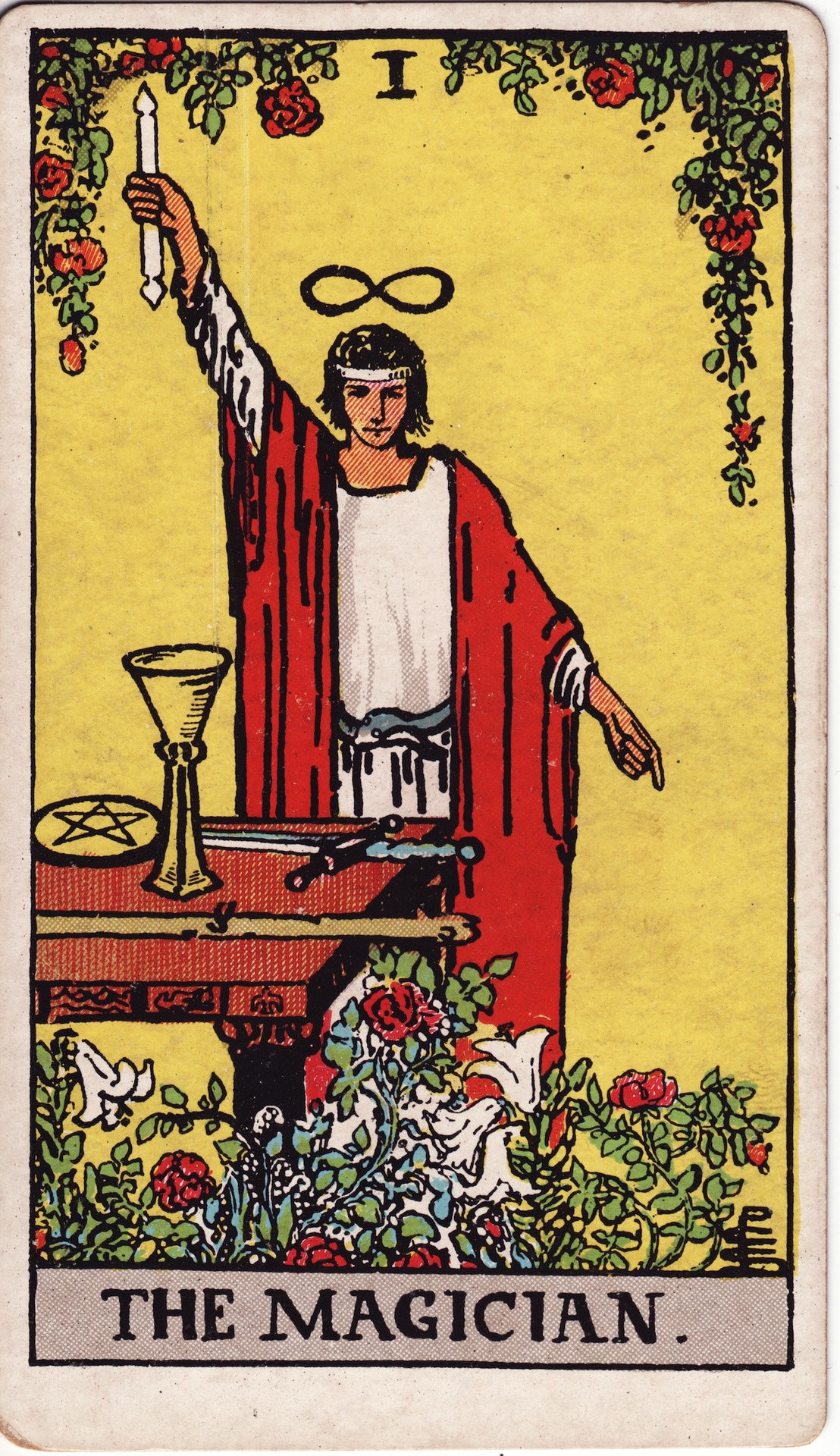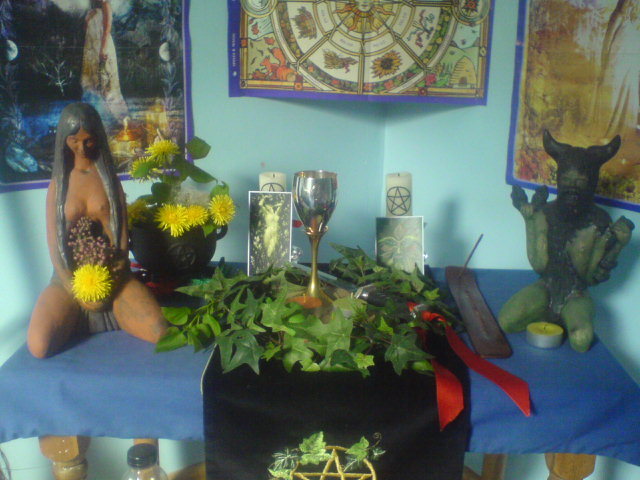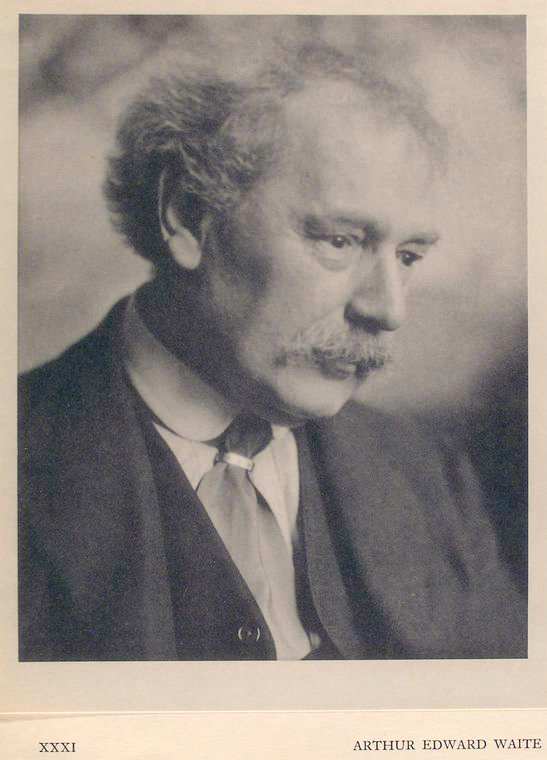|
Boline
The boline (also spelled ''bolline'', pron.: boh-leen) is a white-handled ritual knife, one of several Magical tools in Wicca, magical tools used in Wicca, mainly for the cutting of herbs and inscribing candles. Description Unlike the athame, which in most traditions is never used for actual physical cutting, the boline is used for cutting cords and herbs, carving candles, etc. It has a small, straight or crescent-shaped blade with, traditionally, a white handle. Purpose The boline has been adopted by several other modern forms of witchcraft including Eclectic Wicca. Among these later traditions opinions vary as to whether the boline is truly a magical tool or is merely of utilitarian purpose. Similarly, sometimes a white-hilted knife called a ''kirfane'' (various spellings) is used, for roughly the same purposes as the boline. According to the Kitchen Witchcraft philosophy, the use of magical tools for mundane purposes like cooking is actively encouraged, and as such there is l ... [...More Info...] [...Related Items...] OR: [Wikipedia] [Google] [Baidu] |
Athame
An athame or athamé (, , , or ) is a ceremonial blade, generally with a black handle. It is the main ritual implement or Magical tools in Wicca, magical tool among several used in ceremonial magic traditions, and by other neopagan religions, neopagans, witchcraft, as well as satanic traditions. A black-handled knife called an ''arthame'' appears in certain versions of the ''Key of Solomon'', a grimoire dating to the Renaissance. The ''athame'' stands as one of the four elemental tools in modern occultism, traditionally representing fire for witches, and air for ceremonial magicians. It is mentioned in the writings of Gerald Gardner in the 1950s, who claimed to have been initiated into a surviving tradition of witchcraft, the New Forest Coven. The athame was their most important ritual tool, with many uses, but was not to be used for actual physical cutting. The other three elemental tools are the wand, the pentacle (the element of earth), and the cup or chalice (the element o ... [...More Info...] [...Related Items...] OR: [Wikipedia] [Google] [Baidu] |
Magical Tools In Wicca
In the neopagan religion of Wicca a range of magical tools are used in ritual practice. Each of these tools has different uses and associations and are commonly used at an altar, inside a magic circle. In the traditional system of Gardnerian magic, there was as an established idea of covens which were groups composed of initiated members that conducted rituals involving magical tools and secret books (Book of Shadows). These tools were predominately kept within a specific coven because they were considered sacred. These items were owned and used by individual Wiccans, but could also be used collectively by the coven. This practice may derive partly from Masonic traditions (such as the use of the Square and Compasses), from which Wicca draws some material, and partly from the rituals of the Hermetic Order of the Golden Dawn. The latter made much use of material from medieval grimoires such as the Key of Solomon, which has many illustrations of magical tools and instructions for ... [...More Info...] [...Related Items...] OR: [Wikipedia] [Google] [Baidu] |
Wicca
Wicca (), also known as "The Craft", is a Modern paganism, modern pagan, syncretic, Earth religion, Earth-centred religion. Considered a new religious movement by Religious studies, scholars of religion, the path evolved from Western esotericism, developed in England during the first half of the 20th century, and was Witchcraft Today, introduced to the public in 1954 by Gerald Gardner, a retired British civil servant. Wicca draws upon paganism, ancient pagan and Hermetic Order of the Golden Dawn, 20th-century Hermetic motif (folkloristics), motifs for theology, theological and ritual purposes. Doreen Valiente joined Gardner in the 1950s, further building Wicca's liturgical tradition of beliefs, principles, and practices, disseminated through published books as well as secret written and oral teachings passed along to Initiation, initiates. Many variations of the religion have grown and evolved over time, associated with a number of diverse lineages, sects, and Religious den ... [...More Info...] [...Related Items...] OR: [Wikipedia] [Google] [Baidu] |
Eclectic Wicca
Wicca (), also known as "The Craft", is a modern pagan, syncretic, Earth-centred religion. Considered a new religious movement by scholars of religion, the path evolved from Western esotericism, developed in England during the first half of the 20th century, and was introduced to the public in 1954 by Gerald Gardner, a retired British civil servant. Wicca draws upon ancient pagan and 20th-century Hermetic motifs for theological and ritual purposes. Doreen Valiente joined Gardner in the 1950s, further building Wicca's liturgical tradition of beliefs, principles, and practices, disseminated through published books as well as secret written and oral teachings passed along to initiates. Many variations of the religion have grown and evolved over time, associated with a number of diverse lineages, sects, and denominations, referred to as ''traditions'', each with its own organisational structure and level of centralisation. Given its broadly decentralised nature, disa ... [...More Info...] [...Related Items...] OR: [Wikipedia] [Google] [Baidu] |
Wiccan Terminology
Wicca (), also known as "The Craft", is a modern pagan, syncretic, Earth-centred religion. Considered a new religious movement by scholars of religion, the path evolved from Western esotericism, developed in England during the first half of the 20th century, and was introduced to the public in 1954 by Gerald Gardner, a retired British civil servant. Wicca draws upon ancient pagan and 20th-century Hermetic motifs for theological and ritual purposes. Doreen Valiente joined Gardner in the 1950s, further building Wicca's liturgical tradition of beliefs, principles, and practices, disseminated through published books as well as secret written and oral teachings passed along to initiates. Many variations of the religion have grown and evolved over time, associated with a number of diverse lineages, sects, and denominations, referred to as ''traditions'', each with its own organisational structure and level of centralisation. Given its broadly decentralised nature, disagre ... [...More Info...] [...Related Items...] OR: [Wikipedia] [Google] [Baidu] |
Kitchen Witchcraft
A kitchen is a room or part of a room used for cooking and food preparation in a dwelling or in a commercial establishment. A modern middle-class residential kitchen is typically equipped with a stove, a sink with hot and cold running water, a refrigerator, and worktops and kitchen cabinets arranged according to a modular design. Many households have a microwave oven, a dishwasher, and other electric appliances. The main functions of a kitchen are to store, prepare and cook food (and to complete related tasks such as dishwashing). The room or area may also be used for dining (or small meals such as breakfast), entertaining and laundry. The design and construction of kitchens is a huge market all over the world. Commercial kitchens are found in restaurants, cafeterias, hotels, hospitals, educational and workplace facilities, army barracks, and similar establishments. These kitchens are generally larger and equipped with bigger and more heavy-duty equipment than a residential kitc ... [...More Info...] [...Related Items...] OR: [Wikipedia] [Google] [Baidu] |
Roy Bowers
Robert Cochrane (26 January 1931 – 3 July 1966), who was born as Roy Bowers, was an English occultist who founded the tradition of Witchcraft known as The Clan of Tubal Cain. Born in a working-class family in West London, he became interested in occultism after attending a Society for Psychical Research lecture, taking a particular interest in witchcraft. He founded one coven, but it soon collapsed. He began to claim to have been born to a hereditary family of witches whose practices stretched back to at least the 17th century; these statements have later been dismissed. He subsequently went on to found a tradition known as The Clan of Tubal Cain, through which he propagated his Craft. In 1966, he committed suicide. Cochrane continues to be seen as a key inspirational figure in the traditional witchcraft movement. Ever since his death, a number of Neopagan and magical groups have continued to adhere to his teachings. Early life As noted by Michael Howard, "factual detai ... [...More Info...] [...Related Items...] OR: [Wikipedia] [Google] [Baidu] |
Ritual Implements
A ritual is a repeated, structured sequence of actions or behaviors that alters the internal or external state of an individual, group, or environment, regardless of conscious understanding, emotional context, or symbolic meaning. Traditionally associated with gestures, words, or revered objects, rituals also occur in non-human species, such as elephant mourning or corvid object-leaving. They may be prescribed by tradition, including religious practices, and are often characterized by formalism, traditionalism, rule-governance, and performance. Rituals are a feature of all known human societies. They include not only the worship rites and sacraments of organized religions and cults, but also rites of passage, atonement and purification rites, oaths of allegiance, dedication ceremonies, coronations and presidential inaugurations, marriages, funerals and more. Even common actions like hand-shaking and saying " hello" may be termed as ''rituals''. The field of ritual studies ... [...More Info...] [...Related Items...] OR: [Wikipedia] [Google] [Baidu] |
Sickle
A sickle, bagging hook, reaping-hook or grasshook is a single-handed agricultural tool designed with variously curved blades and typically used for harvesting or reaping grain crops, or cutting Succulent plant, succulent forage chiefly for feeding livestock. Falx was a synonym, but was later used to mean any of a number of tools that had a curved blade that was sharp on the inside edge. Since the beginning of the Iron Age hundreds of region-specific variants of the sickle have evolved, initially of iron and later steel. This great diversity of sickle types across many cultures can be divided into smooth or serrated blades, both of which can be used for cutting either green grass or mature cereals using slightly different techniques. The serrated blade that originated in prehistoric sickles still dominates in the reaping of grain and is even found in modern grain-harvesting machines and in some kitchen knives. History Pre-Neolithic The development of the sickle in Mesopota ... [...More Info...] [...Related Items...] OR: [Wikipedia] [Google] [Baidu] |
Grimoire
A grimoire () (also known as a book of spells, magic book, or a spellbook) is a textbook of magic, typically including instructions on how to create magical objects like talismans and amulets, how to perform magical spells, charms, and divination, and how to summon or invoke supernatural entities such as angels, spirits, deities, and demons. In many cases, the books themselves are believed to be imbued with magical powers. The only contents found in a grimoire would be information on spells, rituals, the preparation of magical tools, and lists of ingredients and their magical correspondences. In this manner, while all ''books on magic'' could be thought of as grimoires, not all ''magical books'' should be thought of as grimoires. While the term ''grimoire'' is originally European—and many Europeans throughout history, particularly ceremonial magicians and cunning folk, have used grimoires—the historian Owen Davies has noted that similar books can be found all around ... [...More Info...] [...Related Items...] OR: [Wikipedia] [Google] [Baidu] |
Arthur Edward Waite
Arthur Edward Waite (2 October 1857 – 19 May 1942) was a British poet and scholarly Mysticism, mystic who wrote extensively on occult and Western esotericism, esoteric matters, and was the co-creator of the Rider–Waite Tarot (also called the Rider–Waite–Smith or Waite–Smith deck). As his biographer R. A. Gilbert described him, "Waite's name has survived because he was the first to attempt a Academic study of Western esotericism, systematic study of the history of Western occultism—viewed as a spiritual tradition rather than as aspects of protoscience or as the pathology of religion." He was a Freemason, as well as being a member of the Societas Rosicruciana in Anglia, SRIA and Hermetic Order of the Golden Dawn, Golden Dawn. He spent most of his life in or near London, connected to various publishing houses and editing a magazine, ''The Unknown World''. Early life and education Arthur Edward Waite was born on 2 October 1857 in Brooklyn, New York, America, to u ... [...More Info...] [...Related Items...] OR: [Wikipedia] [Google] [Baidu] |






